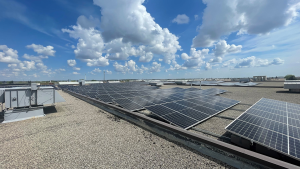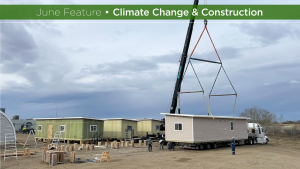EDMONTON — The forecast for Alberta’s construction sector is split over the next four years with non-residential continuing to chug along on the strength of multiple large public and private projects but the residential sector expected to suffer setbacks as demand for new housing declines.
Meanwhile, in Canada’s three territories, workforce conditions could change in the medium term as final investment decisions are made on major mining projects. The development of the mining sector in Canada’s territories will require key construction trades and occupations that are common to engineering and industrial work, and which are in high demand in other industries and provinces.
The demand for these construction trades has grown dramatically and steadily for at least a decade.
The analysis is contained in BuildForce Canada’s 2023–2032 Construction and Maintenance Looking Forward report for the province released April 27.
Alberta’s non-residential sector is underpinned by major road, highway, health, education, commercial, industrial and public-transportation projects, as well as growth in the oil and gas sector.
BuildForce says a modest gain (up two per cent) in non-residential employment over the 10-year forecast period will be more than offset by a loss of 10 per cent in residential employment across the 10-year forecast period. Overall construction employment will contract by three per cent.
Market conditions are currently strained as many residential-sector trades report recruiting challenges.
“The challenge for Alberta’s construction and maintenance sector will be developing a broad-enough labour force in the short term to match employment gains,” said Bill Ferreira, executive director of BuildForce Canada. “Many trades are facing recruiting challenges at the moment.
“Although a slowdown in the residential sector will help to ease some of those pressures, a long list of major projects in the non-residential sector, combined with seasonal industrial shutdown and maintenance activity, will keep that pressure elevated.”
The BuildForce Canada forecast anticipates Alberta’s construction industry will need to replace an estimated 38,200 workers, or 21 per cent of its 2022 labour force, who are expected to retire by 2032.
The province’s younger demographics should help to close much of that gap, with an estimated 38,000 new workers under the age of 30 projected to enter the labour force from the local population.
This leaves a recruiting gap of approximately 5,100 additional workers – those positions created in response to sectoral growth – to be filled by 2032.
New registrations in Alberta’s 25 largest construction trade programs experienced significant declines between 2014 and 2019, contracting by 57 per cent. That rate was far greater than the 19 per cent contraction in employment over the same period.
Completions were also trending down across the same period, albeit at a slower pace. Combined, these trends are likely to reduce the near-term numbers of new certified workers.
Several Alberta trades may be at risk of potentially undersupplying the number of new journeypersons required by 2032.
Trades within this group include boilermaker, bricklayer, carpenter, construction electrician, glazier, heavy-duty equipment technician, hoist operator (boom truck), hoist operator (wellhead), industrial instrumentation technician, industrial mechanic, insulator, powerline technician, roofer, sheet metal worker and welder.
The labour requirements for projects in the Northwest Territories, Yukon, and Nunavut add to the complexity of demand requirements for construction trades and occupations across Canada, stated BuildForce.
While some of the proposed resource-development projects in the territories have been postponed or are pending final investment decisions, meeting labour demands for ongoing resource projects and replacing an aging workforce will require a mix of short- and long-term mobility options.
These include both the movement of workers into remote locations and more long-term additions of young and permanent workers to address an aging workforce.
In the short to medium term, the industry will need to increase the recruitment and training of new workers drawn from the populations of the Northwest Territories, Yukon and Nunavut to meet anticipated future labour force requirements. The use of skilled workers from neighbouring provinces or from other industries can aid as a supplement.











Recent Comments